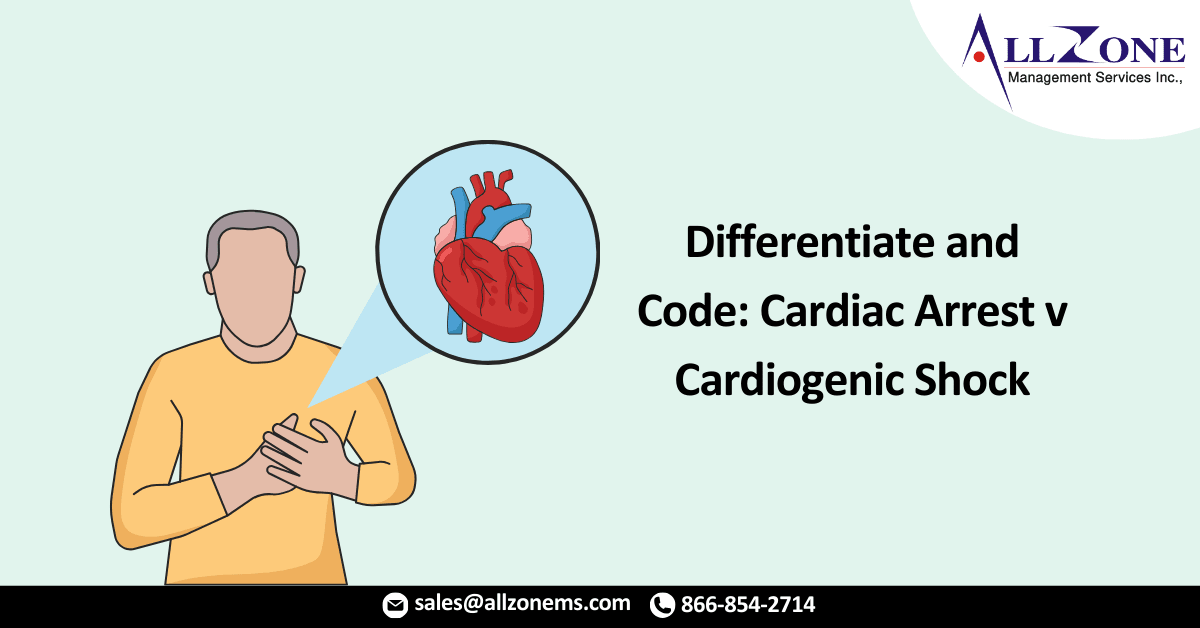Ensure that you are aware of the contrast between the two, and which one takes precedence over the other.
Both cardiac arrest and cardiac shock are medical emergencies that require immediate attention and treatment. These ailments can have severe consequences and may result in fatality if not treated promptly. In medical coding, it is critical to code these conditions accurately to ensure that the appropriate treatment is provided, and reimbursement is acquired.
Identifying Cardiac Arrest
Cardiac arrest is when the heart abruptly stops beating. This can happen due to various reasons such as a heart attack, electrocution, drowning, or other factors that can cause the heart to stop functioning. In cardiac arrest, the individual will lose consciousness and may not have a pulse or be breathing. Immediate treatment with CPR and defibrillation is required to restore normal heart function.
In medical coding, cardiac arrest is generally coded as ICD-10-CM code I46.x. It may also be coded based on the underlying cause such as an acute myocardial infarction (MI) (I21.x) or accidental drowning (W65.x-W74.x).
Related Article
|
Identifying Cardiogenic Shock
Cardiogenic shock, or cardiac shock, is when the heart is incapable of pumping enough blood to meet the body’s requirements, but has not yet stopped beating. This can occur due to a variety of reasons such as heart attack, sepsis, and other medical conditions. If not treated promptly, it can lead to serious consequences such as arrest, organ failure, and death.
The treatment for cardiogenic shock includes possible mechanical ventilation, inotropic agents, or dopamine, aspirin, thrombolysis, blood thinning, and antiplatelet medications. If a coronary blockage is causing an MI and cardiogenic shock, then an angioplasty with stents may be performed. A balloon pump may also be used.
Cardiogenic shock is typically reported with ICD-10-CM code R57.x and can also be coded based on the underlying cause such as a heart attack or sepsis (A41.x).
Code Cardiac Arrest and Cardiogenic Shock
What happens if both conditions are recorded by the provider in your medical record? Starting from fiscal year 2021, ICD-10-CM replaced the Excludes1 note with the Excludes2 note, as shown below.
I46 Cardiac arrest
Excludes2: cardiogenic shock (R57.0)
Excludes2 notes signify “Not included here.” It means that the excluded condition is not a part of the condition represented by the code, but a patient may have both conditions concurrently. When an Excludes2 note appears under a code, it is acceptable to use both the code and the excluded code together, if appropriate.
However, ICD-10 Coding Clinic® states that if a patient is admitted and diagnosed with both cardiac arrest and cardiogenic shock, only code I46.9 Cardiac arrest, cause unspecified should be assigned.
Cardiac arrest is coded instead of cardiogenic shock since code R57.0, Cardiogenic shock, is located in Chapter 18, Symptoms, Signs and Abnormal Clinical and Laboratory Findings, Not Elsewhere Classified, and cardiac arrest is a more definitive diagnosis.

